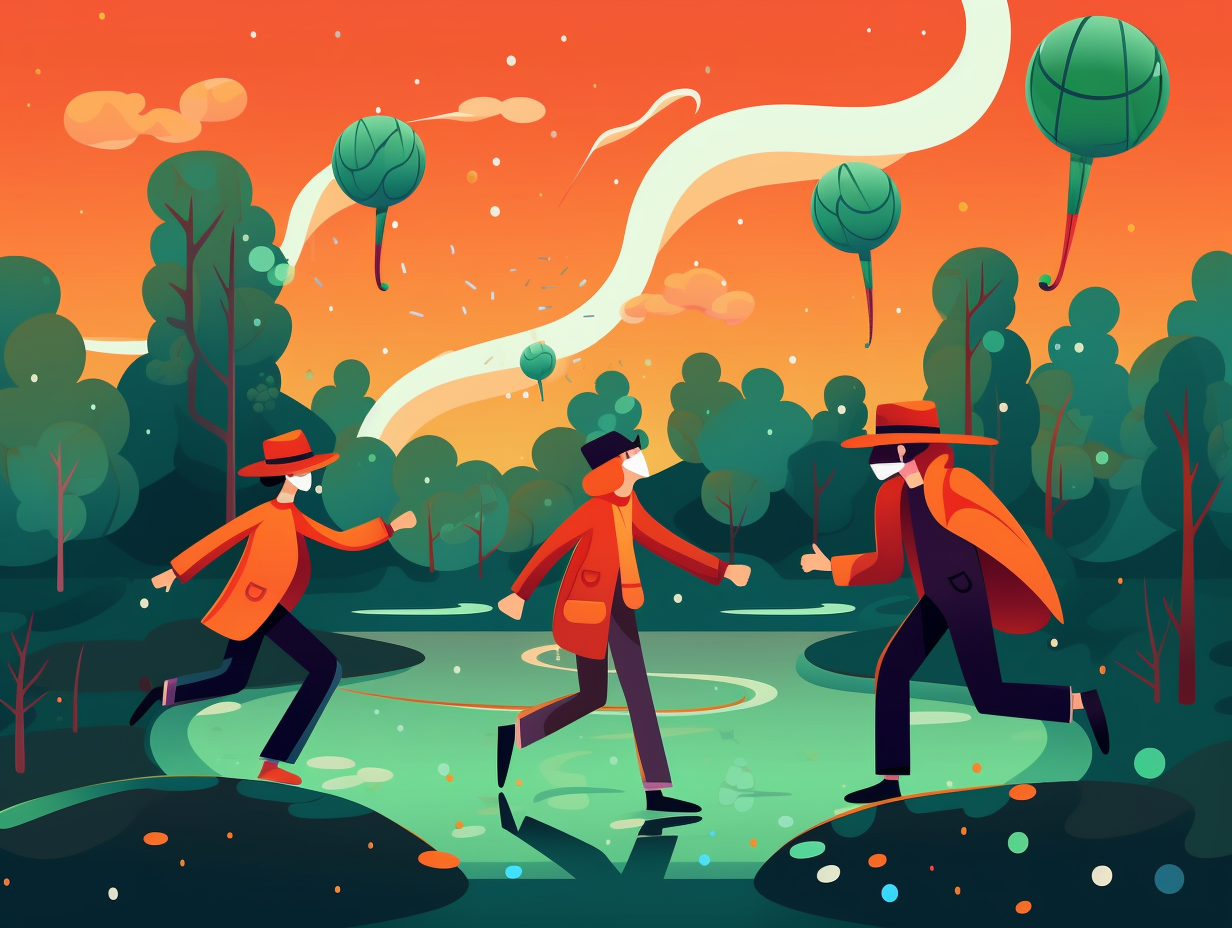Discover the Wonders: Top 12 Fun Facts About Our 5 Senses That Will Amaze You!

1. Trillion-Scent Detectives
Hold your nose and brace yourselves, for the world of aromas is larger than the perfume aisle at a fancy department store: Humans can actually detect up to a whopping trillion smells, leaving the previously believed 50,000 scents in the (scented) dust. Our noses boast receptors that can differentiate between a mind-boggling array of complex mixtures, sending messages straight to our scent-sational brains and making our olfactory abilities a force to be reckoned with.
Source => awpnow.com
2. Exclusive Taste Bud Party
In a world where taste buds seemingly host an exclusive party in your mouth, with members-only access to tantalize your palate: Our tongues contain 2,000 to 4,000 exclusive taste buds, linked through a network of nerve fibers and capable of detecting varying degrees of sweetness, sourness, and more, while some maintain VIP status as specialists focusing on just one flavor.
Source => ncbi.nlm.nih.gov

Did you know an adult human has a whopping 60,000 miles of blood vessels inside their body? Discover more amazing facts about our incredible, party-going heart and beyond!
=> Fun Facts about The-Human-Body
3. Rockin' Spiral Ganglion Neurons
If your spiral ganglion neurons had a musical taste, they'd be die-hard rock fans who can appreciate both the soft whisper of a ballad and the deafening roar of heavy metal: these unsung heroes of your ears are responsible for detecting and transmitting complex sounds - like music and language - to the brain. Some of these neurons rock out to low-intensity sounds with high spontaneous firing rates, while others jam to a wider range of response rates for detecting changes in sound volume. And guess what? Unraveling the secret of these auditory virtuosos could provide a backstage pass to improved treatments for hearing impairments, such as the cochlear implant!
Source => ncbi.nlm.nih.gov
4. Rainstorm Smells: Plants & Bacteria Secrets
Cancel your umbrella-ella-ella plans, it's time to get your nose in the know: Contrary to popular belief, our sense of smell doesn't go into olfactory overdrive after a rainstorm – the scent of petrichor arises from plants secreting oils during dry spells and geosmin, a chemical produced by bacteria. Factors like the length of the dry spell and rain intensity determine how rain-tastic it smells, not our sniffers stepping up their game.
Source => thoughtco.com

5. Baby Tongue Superheroes
Tongue Twisters: Babies possess a lick-tacular talent akin to Wolverine, with about 9,000 taste buds that can regenerate every 1-2 weeks, recovering taste just a few days after a piping hot tongue tango. But as we age, the superhero abilities of our taste buds dwindle, with women losing this regenerative power in their 50s and men in their 60s.
Source => npr.org
6. Capsaicin's Spicy Prank
Feeling the heat after a spicy showdown with a chili pepper? There's a not-so-funny culprit behind that fiery sensation: Capsaicin, the spicy prankster in chili peppers, not only triggers heat-sensitive nerve endings but also masquerades as a pain-inducing agent. This mischievous molecule binds itself to the capsaicin receptor, a VIP lounge for sensory neurons responsible for pain perception: So when you endure the burning aftermath of your culinary daredevilry, know that capsaicin is behind your suffering – but also appreciate its mastery of spicy deception.
Source => ncbi.nlm.nih.gov
7. The Human Chameleons: Synesthesia
Did you hear about the human chameleons who taste numbers and hear colors? They might just be the superheroes we didn't know we needed! No need to adjust your technicolor glasses, for this funhouse of senses is called synesthesia: a neurological condition where stimulation of one sensory pathway triggers experiences in another unrelated pathway, like tasting words or seeing sounds. Found in 3 to 5 percent of the population, synesthesia might come with a side dish of enhanced creativity and memory, passing down cool genetic quirks for future generations to enjoy.
Source => psychologytoday.com
8. The Great Taste Bud Decline
Whoever said "the older the wiser the tastier" clearly didn't account for aging taste buds: As we grow older, our taste buds and sense of smell decline, leading to less sensitivity to flavors and scents, especially after age 70, because of shrinking taste buds, loss of nerve endings, reduced mucus production, and other factors like diseases, smoking, and exposure to harmful particles.
Source => medlineplus.gov
9. Walking Touch Thermometers
Feeling hot, hot, hot, or just a wee bit chilly? Fear not, for it turns out we're all walking, talking thermometers with a flair for detail: Our sense of touch boasts remarkable temperature receptors in our skin, capable of detecting changes as tiny as 0.02 degrees Celsius, helping us differentiate not only hot and cold, but even the subtle sensations of wet and dry.
Source => scholarpedia.org

10. Grass' Distress Signal and Wasp BnB
Who knew your lawn doubled as a bed & breakfast for parasitic wasps? Yep, that delightful fragrance of freshly cut grass does more than just tickle your nostrils: it's actually a distress signal that the grass sends out to attract wasps, who then lay their eggs in the pesky caterpillars munching away on the grass. These volatile green leaf compounds and jasmonic acid help the grass heal, drive away insects, and save your precious lawn from imminent doom.
Source => scienceabc.com
11. Color Perception Battle of the Sexes
Who needs 50 shades of grey when you have endless shades of yellow and green? Ladies and gentlemen, we present the ultimate battle of the sexes – color perception: It turns out that women are better at distinguishing between subtle gradations of yellow and green hues, while men excel at perceiving changes in brightness and recognizing faces, possibly due to more testosterone receptors in the visual regions of their brains. However, the exact mechanism is still shrouded in mystery – much like why an artist's color vocabulary level knows no gender bounds.
Source => smithsonianmag.com
12. Ears: The Blacksmiths of Sound
You could say that our ears are the "blacksmiths of sound," forging and shaping vibrations into pure auditory gold: The three smallest bones in our body - the hammer, anvil, and stirrup - team up in the middle ear to transmit sound vibrations from the eardrum to the inner ear, where a snail-shaped organ with 25,000 nerve endings called the cochlea transmutes them into electrical impulses that our clever brains interpret as sweet, sweet sounds.
Source => hopkinsmedicine.org
Related Fun Facts




















